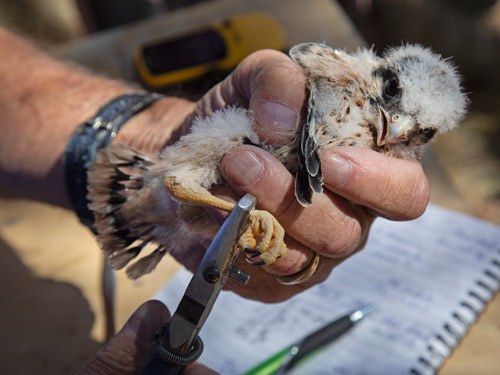Recently, volunteers with the American Kestrel Partnership headed to Whychus Canyon Preserve to band young kestrels and collect data about this fascinating bird. In order to learn more about kestrels and their decline, volunteers check nest boxes throughout the spring and summer, recording eggs and eventually, chicks. If the young birds survive, volunteers band the birds at around 22 days old, right before they fledge at 28-31 days. The birds are also checked for parasites, and information like windspan and sex are recorded.

Why do we have nest boxes for kestrels? American Kestrels nest in snags--dead trees that are still standing. It has been (and continues to be) the policy of various organizations and landowners to remove snags. While the Deschutes Land Trust makes a concerted effort to keep snags standing for American Kestrels and many other birds and wildlife that rely on them, nest boxes are also being used.
Why are American Kestrels in decline? The American Kestrel population has declined by about 50% between 1966 and 2015, according to the North American Breeding Bird Survey. Researchers are uncertain about the exact cause of the American Kestrels’ population decline, but some attribute it to the removal of snags (where kestrels nest) and a loss of food sources due to pesticide use and the removal of vegetation around farmland.
3 cool facts about American Kestrels:
- Kestrels are the smallest falcon in North America.
- They often hunt by hovering in place.
- When kestrels nest, they do not use any nesting material.
Learn more:


